Essential Steps to Download Windows 11 from Windows 10
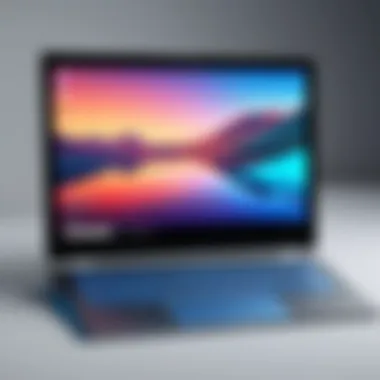
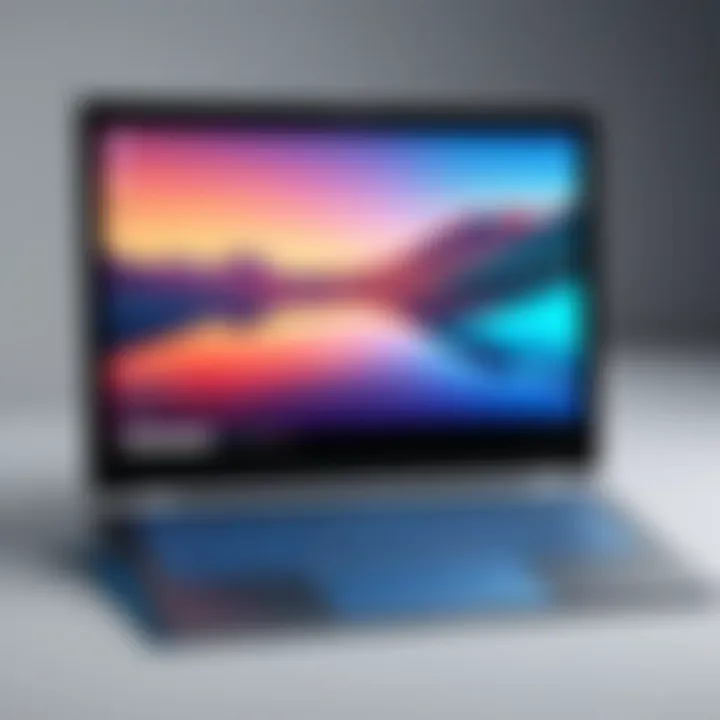
Overview of Hardware/Software
Upgrading from Windows 10 to Windows 11 is a journey that opens new avenues for productivity, creativity, and connectivity. This transition is not just about moving into a new operating system; it’s about stepping into a workspace redefined by modern standards. Windows 11 boasts several key features, such as a redesigned Start Menu, improved virtual desktops, and greater integration with Microsoft Teams.
Specifications and Technical Details
To ensure a smooth upgrade, it’s crucial to verify that your hardware meets the necessary specifications. The core requirements include:
- Processor: 1 GHz or faster with at least two cores on a compatible 64-bit processor.
- RAM: Minimum of 4 GB.
- Storage: 64 GB or larger storage device.
- TPM: Version 2.0.
- Graphics card: DirectX 12 compatible graphics / WDDM 2.x.
- Display: >9" with HD Resolution (720p).
These requirements may sound daunting, but they align with the advancements Windows 11 brings to the table.
Pricing and Availability
Windows 11 is available as a free upgrade for eligible Windows 10 devices, so long as they meet the outlined hardware specifications. For new machines, the pricing can fluctuate based on configurations, with devices starting around $500, depending on brand and features. Check the Microsoft Store for the most updated availability in your region.
Comparison to Previous Versions
When comparing Windows 11 to its predecessor, Windows 10, several significant differences arise. The visual changes, such as centered taskbar icons and rounded window corners, give a more modern feel. Furthermore, performance enhancements and a focus on gaming through features like DirectStorage make this operating system a noteworthy upgrade. One might find that while Windows 10 was stable and reliable, Windows 11 pushes the boundaries of what is possible with a PC experience.
"Windows 11 isn’t just another update; it’s a significant shift towards a more integrated digital life, appealing both to casual users and tech enthusiasts alike."
Pros and Cons
Like any operating system, Windows 11 presents its own set of advantages and disadvantages.
Strengths
- User Interface: The overhaul makes navigating the system feel more intuitive.
- Performance: Optimizations under the hood lead to faster load times.
- Gaming Features: Tools like Auto HDR and DirectStorage release gaming potential.
Weaknesses
- System Requirements: Not all older hardware can transition smoothly.
- Learning Curve: For users comfortable with Windows 10, there might be a period of adjustment.
- Early Bugs: As with any new software, early adopters may face initial glitches.
User feedback has been mixed, with many embracing the new aesthetic while others remain loyal to the stability of Windows 10.
Performance and User Experience
When it comes to performance testing, Windows 11 often shows improved load times compared to its predecessor, making it an appealing option for both professionals and gamers. The streamlined user interface contributes considerably to the ease of use. Features such as Snap Layouts allow for multitasking like never before, creating a workspace that fosters productivity.
Real-World Usage Scenarios
Take, for instance, someone who juggles multiple applications for work: the ability to effortlessly arrange app windows can transform chaotic work sessions into organized workflows. In a field like graphic design or coding, the enhancements in screen space management can lead to increased efficiency.
Innovation and Trends
The technology landscape is shifting dramatically, with an emphasis on seamless integration and user experience. Windows 11 fits neatly into this shift, showcasing features that appeal to the modern worker, like enhanced touch capabilities and improved virtual desktops. These innovations suggest a future where Operating Systems continually adapt to user needs, creating an environment that is both functional and enjoyable.
Recommendations and Epilogue
In considering an upgrade to Windows 11, one must weigh the benefits against the hardware capacity and personal comfort with the changes. This operating system primarily targets users with compatible devices who want to maximize their productivity and enjoyment in the digital realm.
In summary, Windows 11 stands out for its modern features and improvements. But as always, one size doesn’t fit all. Evaluate your specific needs, and let Windows 11 guide you into the future of computing.
Prelims to Windows
As the successor to Windows 10, Windows 11 represents a significant leap in Microsoft's operating system offerings. It's not just a cosmetic upgrade; it introduces a slew of features and functionalities designed to improve user experience and productivity. While many users might be content with their existing setup, the potential benefits of switching to Windows 11 are compelling enough to consider making the leap.
One of the key enhancements that Windows 11 brings to the table is its revamped user interface. With centered taskbar icons and a fresh start menu layout, it aims to create a more intuitive navigation experience. This design isn’t just for show; it can help users locate their applications and files more easily, fostering a smoother workflow.
Additionally, the new operating system incorporates advanced productivity features. For instance, Snap Layouts allows users to organize multiple open windows into a grid, whether for multitasking on a project or managing different user activities. This focus on facilitating efficient multitasking can be a game changer for both IT professionals and tech enthusiasts alike.
"Windows 11 signals a new era of OS design, focusing on accessibility, performance, and an aesthetically pleasing user experience."
Performance enhancements are another important aspect worth mentioning. With its optimized resource management, Windows 11 promises faster boot times and quicker application loads. This is especially beneficial for power users working with demanding software programs or large files. Moreover, the integration of DirectStorage technology enhances gaming performance, providing faster load times and improved graphics.
However, before diving into the upgrade, it's crucial to understand that not every Windows 10 machine is compatible with Windows 11. Certain hardware requirements must be met, making it essential for users to evaluate their systems prior to downloading. Recognizing these guidelines can save time and frustration during the transition.
To summarize, Windows 11 is more than just another iteration of Microsoft's operating systems; it encapsulates a refreshed vision for computing that prioritizes efficiency, performance, and aesthetics. For those contemplating an upgrade from Windows 10, being informed about the features, benefits, and requirements is paramount to ensure a successful transition.
Understanding Windows Upgrade Paths
When considering an upgrade to Windows 11, it’s crucial to grasp the various pathways available from Windows 10. This understanding is not just about technical specifications; it encapsulates the broader strategy of how and why one would move to the latest operating system. In a world where technology changes faster than a racecar on a track, knowing your upgrade path can save you headaches down the line.
Importance of Upgrade Paths

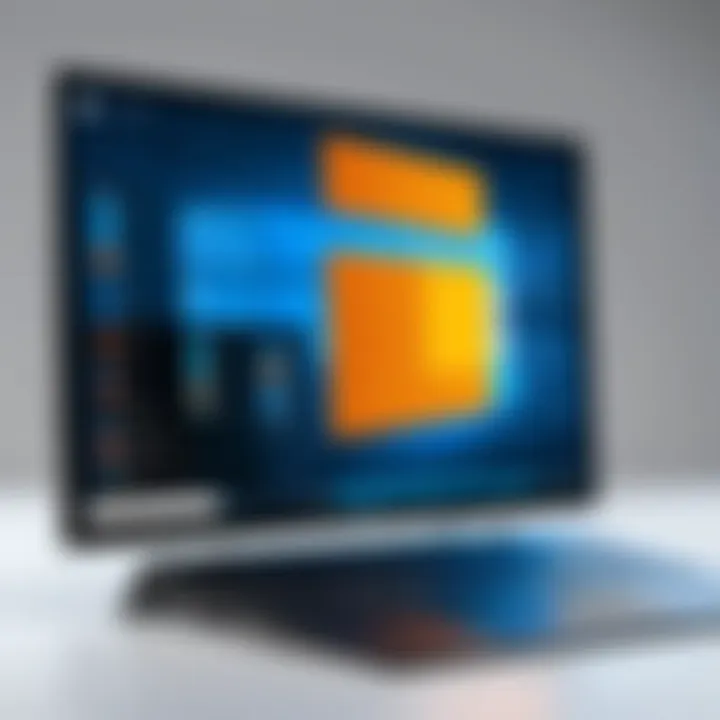
The significance of comprehending these upgrade paths cannot be overstated. There are several elements that play into the decision-making process:
- Compatibility: Many users often think about shiny new features while overlooking if their current system aligns with the requirements for Windows 11. Each upgrade path comes with its own prerequisites. Understanding these can prevent the frustration of starting an upgrade only to find your hardware doesn’t measure up.
- Cost Considerations: Depending on the upgrade route, costs can vary immensely. Some users might qualify for a free upgrade, while others may need to invest in new hardware or software. Understanding the pathways can help you budget accordingly.
- Time and Effort: Some installations can be a real bear. Upgrading through Windows Update may take significantly less time compared to creating installation media or performing a clean installation. Knowing these differences can help you plan your schedule better.
Key Upgrade Paths
There are typically three paths that one can take when upgrading Windows 10 to Windows 11:
- Windows Update: This is the simplest method, where users receive a notification from Microsoft about the availability of Windows 11 directly through their system settings. It's ideal for those who want a hassle-free upgrade without the need for additional tools.
- Downloading from Microsoft’s Website: If you’re a bit more tech-savvy and want a more hands-on approach, this option allows users to directly download the installer from Microsoft's website. This could be beneficial if you’re looking at options beyond just the direct update, like using multiple devices.
- Creating Installation Media: For the adventurous ones, you can create a USB flash drive or DVD to perform a fresh installation. This method might seem a bit more daunting, but it can be a blessing if you want to ensure every trace of old data is gone or if you are working on a new device.
"Understanding your upgrade path is a key aspect in ensuring a smooth transition to Windows 11. It’s not just about the new interface; it’s about making the right choices tailored to your needs."
Considerations in Choosing a Path
While the above methods seem straightforward, there are some nuances to consider:
- Hardware Age: Your machine's age can dictate which paths are realistic. An older PC might struggle with an update, skewing towards a clean install route dos and don'ts.
- Type of Use: Are you a casual user or a power user? The heavier your usage, the more likely you might want to lean towards fresh installations to avoid clutter.
By understanding the ins and outs of your upgrade paths from Windows 10 to Windows 11, not only do you prepare yourself for a smoother transition, but you also equip yourself with the knowledge to make informed decisions along the way.
Requirements for Installing Windows
Understanding the requirements for installing Windows 11 is crucial for anyone planning to upgrade from Windows 10. Compatibility isn't just a box to check; it's the foundation of a seamless transition. Failing to meet these requirements can lead to frustrations down the line, such as performance issues or even installation failures. This section delves deep into what you need to know about system requirements — from hardware specifications to vital security features.
System Requirements Overview
Before diving into the nuts and bolts, let’s take a bird’s-eye view. Installing Windows 11 requires certain hardware characteristics that are notably different from its predecessor.
Key Requirements:
- Processor: A compatible 64-bit processor running at 1 GHz or faster with at least two cores.
- RAM: Minimum of 4 GB of RAM.
- Storage: At least 64 GB of available storage.
- UEFI Firmware: Must support Secure Boot.
- TPM: Trusted Platform Module version 2.0 is a must.
These specifications are not just arbitrary; they serve specific purposes for ensuring that Windows 11 operates smoothly and securely. Keeping these in mind as we explore further will save you headaches later on.
Processor Compatibility
The heart of your machine dictates its potential. Windows 11 necessitates a 64-bit processor with at least two cores running at a minimum of 1 GHz. This is more than a step up from Windows 10; it lays the groundwork for improved performance and multitasking capabilities.
Why is this important?
- Performance: Dual-core processors help in handling applications more efficiently, reducing lag.
- Future-proofing: Modern processors often have better power efficiency and refined architectures designed to harness the advances in software technologies.
Make sure to check if your processor meets these standards before venturing into the installation process, as outdated processors could spoil the party.
Memory and Storage Needs
While many people consider RAM as just numbers, it plays a vital role in your system's efficiency. Windows 11 requires a minimum of 4 GB of RAM. But as most tech enthusiasts know, more is often better, especially if you're the type to multitask or engage in resource-intensive activities like gaming or video editing.
In regards to storage, ensure you have at least 64 GB of available space. This might seem reasonable on the surface, but given that updates and new apps require extra storage, a little lateral thinking won’t hurt. It’s not a good idea to be digging around to free up space after you've started the installation.
- Tip: Consider investing in an SSD if your machine runs on an HDD. The performance boost is noticeable, especially during the boot process and loading applications.
TPM and Secure Boot Requirements
Gone are the days when security was an afterthought in the operating system design. Windows 11 introduces stricter security protocols, making the requirement for TPM version 2.0 non-negotiable. This component acts as a safeguard for your system’s security, ensuring that sensitive data, like encryption keys, remain protected.
Then there's the Secure Boot feature, which adds another layer of security against malware attempts during the boot process. Without these features enabled, Microsoft won’t even let you through the door.
Important Note: If you're unsure about the status of TPM or Secure Boot, check your device’s firmware settings. Insights can often be found under Security or Boot menus.
Preparing for the Upgrade
Before you dip your toes into the upgrade pool from Windows 10 to Windows 11, it’s paramount to get your ducks in a row. Preparing for the upgrade isn't just a step in the process; it’s the foundation upon which a smooth transition is built. If you skimp on preparation, you may find yourself grappling with unanticipated hiccups during installation. This phase involves critical tasks like backing up your data, ensuring there’s enough disk space, and updating your current system. Let’s break it down more meticulously.
Backing Up Important Data
One doesn't want to start an upgrade without having good backups of important information. Think of your data like precious cargo; you wouldn’t take a long trip without ensuring everything is secured, would you?
Why should you back up? Well, even with the most well-laid plans, technology can be fickle. During an upgrade, files can become corrupted or lost amid the transition. This could lead to chaos. It's always a wise move to have backups of crucial documents, pictures, and anything else that might not be in the cloud.
- Methods for Backing Up:
- Use cloud storage like Google Drive or Dropbox for easy accessibility.
- Invest in external hard drives or USB flash drives. These can provide a physical backup that doesn't require internet access.
- Consider using backup software that can automate the process, ensuring you don’t miss a file.
Before you initiate the upgrade, double-check your backups to confirm that everything is in order.
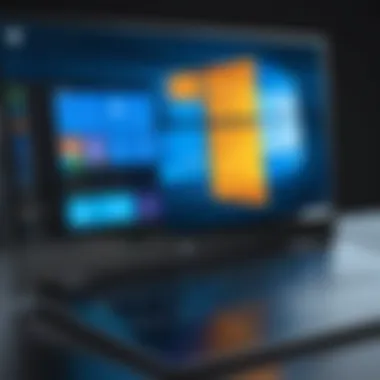

Freeing Up Disk Space
Next on the list is clearing out the cobwebs. Freeing up disk space may not seem like a glamorous task, but it can save you a headache later on. Windows 11 has its own storage needs, and if your drive is bursting at the seams, you might run into some snags.
How much space do you need? Generally, it’s advisable to have at least 20 gigabytes of free space, but more is better. To assess your situation:
- Uninstall unused programs: Go through your installed applications like a hawk. If there's software you haven’t touched in a while, it’s time to bid it farewell.
- Delete temporary files: Access the Disk Cleanup tool by typing it in the search bar. This can rid your system of junk files.
- Utilize Storage Sense: This built-in feature automatically deletes unnecessary files over time. You can customize its settings based on your needs.
Taking these steps not only clears space but also boosts your system's performance overall.
Updating Windows
Last but not least, updating your Windows 10 version should be on your radar before making the leap to Windows 11. You want to be running the latest version, which not only helps with compatibility but can also smooth out a few of the bumps in the road you may face while installing the new OS.
Updating is simple:
- Go to Settings > Update & Security > Windows Update.
- Click on Check for updates.
- Follow the prompts to install any available updates.
Make sure to restart your computer if prompted. This step ensures that all installations are complete and prepares your system for the next phase of the upgrade.
"Taking the time to prepare your system is as crucial as the installation itself. Don’t underestimate the importance of these steps."
Methods to Download Windows
Downloading Windows 11 can seem like a daunting task, especially for those who are less technically inclined. However, understanding the different methods to get the new operating system is crucial. Each method presents its own set of benefits and considerations, giving users the flexibility to choose the one that suits their needs best.
By exploring these methods, from utilizing the Windows Update feature to creating installation media, users can ensure a smoother transition from Windows 10 to Windows 11. Focusing on approach allows them to maximize efficiency while minimizing potential complications. Below are three practical methods outlined for your clarity.
Using the Windows Update Feature
One of the simplest ways to upgrade to Windows 11 is through the Windows Update feature. This process is not merely a case of clicking buttons; it’s about ensuring that your system is indeed ready for the upgrade. Before you initiate the downloading phase, it's good practice to check your current updates. Go to Settings > Update & Security > Windows Update. If Windows 11 is available, you'll see an option to download and install it.
What makes this method appealing? For starters, it seamlessly integrates with your existing Windows environment. You won't have to juggle files or contemplate compatibility issues since Windows Update does a good job of managing those for you. However, users must keep in mind that sometimes their upgrade will depend on hardware capabilities. If their system fails the requirements check, they may miss the upgrade altogether.
Your patience can foster a smooth experience, as the entire process may take time, depending on your Internet connection and system performance.
Downloading from Microsoft's Website
For those who prefer a more hands-on approach, you can download Windows 11 directly from Microsoft's official website. The company provides a dedicated page where users can access the upgrade tool or even the ISO file if they decide to install the OS later.
The steps here are quite straightforward:
- Visit the Microsoft Windows 11 page.
- Choose either the upgrade tool or the option to download the ISO.
- Follow the prompts to bring Windows 11 into your life.
Using the website is a highly controlled method, putting the user in charge of their upgrade. Nevertheless, double-checking that your system has met all the system requirements prior to downloading saves some heartache later. A penchant for detail can save you a lot of trouble.
Creating Installation Media
Creating installation media for Windows 11 can sound complex, yet it often provides the most flexibility. This method caters to individuals who want to perform a clean installation or install Windows 11 on multiple systems. What you need is a USB drive with a minimum of 8 GB of space.
The process can be split into a few key steps:
- Go to the Windows 11 download page.
- Download the Media Creation Tool.
- Run the tool and follow the instructions to create a bootable USB drive.
This option is beneficial as it allows you to start fresh, trimming away any unwanted files and settings that might be lingering from Windows 10. However, the user must be careful about data loss so backing up important files should always precede such installations. The ability to create media not only aids in future reinstalls but also brings a sense of empowerment and control over the installation process.
"Upgrading is not just about getting a new interface, it's about understanding each step and making the best choice for your situation."
In sum, each method to download Windows 11 heralds its own advantages. Whether you lean towards the convenience of Windows Update, the direct download approach, or the power of creating installation media, you are equipped to manage your upgrade effectively.
Installation Process of Windows
The installation process is a crucial phase when transitioning from Windows 10 to Windows 11, a juncture that can greatly impact your experience with the new operating system. Completing this process without a hitch not only ensures that you get the best features Windows 11 has to offer, but also enhances overall system performance and security. New users may find this step intimidating due to unfamiliar interfaces or settings. Thus, a clear and concise approach to installation holds utmost significance.
A smooth install can also make a world of difference in your everyday computing tasks. As Windows 11 introduces numerous improvements and updates, understanding the installation procedure is pivotal. Failing to follow the right steps may lead to unexpected surprises down the line – accidents like data loss, compatibility hassles, or even system failures can turn a straightforward upgrade into an uphill battle. Knowing what to expect can provide much-needed reassurance during this transition.
Step-by-Step Installation Guide
When you’re ready to install Windows 11, it's important to follow a structured process to avoid hiccups. Here’s a well-outlined guide to help you through each step:
- Ensure Compatibility: Start by confirming that your device meets the minimum requirements for Windows 11. Tools like the PC Health Check app can be handy for this.
- Back Up Your Data: Before diving into the installation, it’s wise to back up any critical files or documents. Using external drives or cloud storage can safeguard against potential losses.
- Download Windows 11: Depending on the method you've chosen, initiate the download process. This could involve using Windows Update or creating installation media.
- Run the Installer: Once downloaded, locate the installer and double-click to run it. Follow the on-screen prompts, which may involve accepting terms and conditions.
- Select the Installation Type: Here, you have options. You can either upgrade your current system or perform a clean install, which will erase everything and provide a fresh start.
- Choose Additional Settings: Configure any regional settings, user accounts, and privacy options as guided during the setup.
- Install Windows 11: Hit the install button and watch as your system works its magic. The installation itself might take some time, so be patient.
- Post-Installation Updates: After installation, check for any updates that may be available to ensure your system is up-to-date.
This structured sequence enables a more seamless transition into Windows 11, while ensuring that significant aspects are not overlooked.
Choosing the Right Installation Type
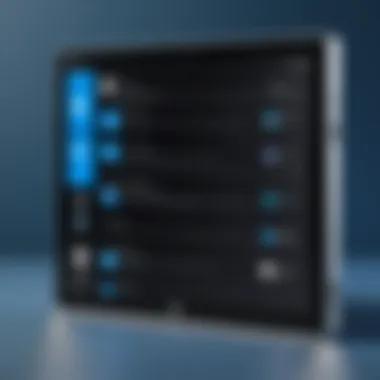
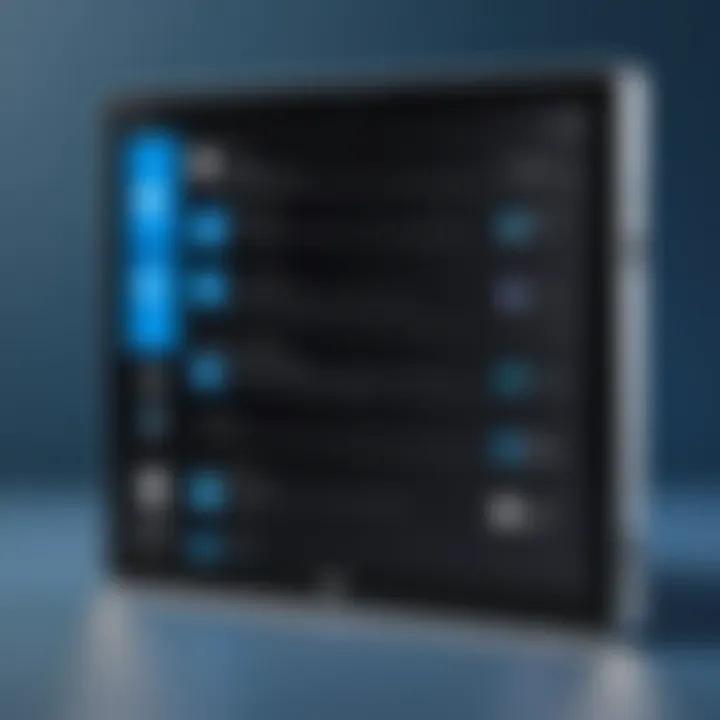
Selecting the right installation type is not just a trivial matter; it’s a fundamental choice that dictates how your system will behave post-installation. You generally have two options: an upgrade installation or a clean installation.
- Upgrade Installation: This option keeps your existing files, apps, and settings intact, allowing you to transition smoothly without disrupting your work environment. It’s the go-to choice for most users who want to retain their current setup.
- Clean Installation: This method erases everything on the system drive, offering you a clean slate. It’s ideal for users who want to start fresh or troubleshoot significant issues.
- Pros: Less hassle, retains your files and applications.
- Cons: Potential carryover of existing issues from Windows 10 may affect performance.
- Pros: A fresh system may perform better; eradicates any lingering software bugs.
- Cons: Requires restoration of files and reinstallation of applications, which may take time.
In essence, choosing between these installation types depends on your individual requirements, your data and applications, and your comfort level with performing system rebuilds. Make this decision wisely, as it can significantly shape your Windows 11 experience.
Common Issues During Installation
When it comes to upgrading to Windows 11 from a Windows 10 system, understanding common issues during installation is imperative. You wouldn’t want your system to go belly-up in the middle of a task as significant as this. This section sheds light on what may go awry and the importance of being prepared.
Unexpected Errors
Unexpected errors can be the thorn in the side of any installation process. These issues can manifest in various forms, ranging from installation freezes to errors indicating compatibility problems. Here are some notable examples:
- Error Codes: Specific error codes might flash on your screen, leaving you scratching your head. These can often be cryptic, such as '0xC1900101' or '0x80070057'—simply dreadful! Knowing what each code means can be useful, as well as having a plan of action for each.
- System Freezing: Sometimes, the install will just stall. A hard reboot may be tempting, but that can cause further complications, such as corrupted files.
- Driver Conflicts: Outdated or incompatible drivers may lead to installation hang-ups. Ensure all drivers, particularly graphics and chipset drivers, are updated before you push the installation button.
To tackle these unexpected errors:
- Check Compatibility: always double-check whether your hardware fits the requirements for Windows 11.
- Update Drivers: Run software, such as Driver Booster, to ensure everything is up to date.
- Seek Help Online: The internet hosts a plethora of forums, including platforms like Reddit that can guide you through fixing specific error codes or abnormal behaviors.
Being prepared can make the difference between a smooth transition to Windows 11 and a headache-inducing experience.
Licensing Issues
Licensing issues can complicate what should be a straightforward upgrade. A seamless transition may stumble if you're not careful about your Windows license. Here are some points to consider:
- Valid License Key: If you are still using a license key for an earlier version of Windows, you might run into trouble. Each Windows version has its own validation strategy. Ensure that your license is valid for Windows 11.
- Activation Problems: Even if your installation goes flawlessly, there’s the activation stage that follows. Sometimes, even with a legitimate license, the system may not activate properly after the installation. Errors during activation could mean you need to contact Microsoft's support.
- Digital License: If your system uses a digital license tied to your Microsoft account, make sure you’re logged in during the installation, so your license can be recognized and activated seamlessly.
To steer clear of these licensing hurdles:
- Verify Your License: Before starting the installation process, verify that your license is suitable for the Windows 11 upgrade.
- Keep Your Microsoft Account Information Handy: This will help in securing your digital license if anything goes amiss during installation.
- Document Activation Status: Take note of your current activation status. If issues arise post-install, documenting this may be beneficial when seeking assistance.
In summary, the common installation issues can pose challenges to a smooth upgrade experience. Awareness of these pitfalls helps in mitigating potential roadblocks, allowing for a successful transition to Windows 11.
Post-Installation Considerations
Once you've successfully navigated the upgrade to Windows 11, the journey doesn't end there. Effective post-installation steps can significantly enhance your experience, ensuring that your new system operates smoothly and aligns with your needs. Thinking ahead during these crucial moments can save you time, prevent headaches, and ultimately help you or your organization get the most out of the new features and capabilities that Windows 11 brings to the table.
Setting Up Windows
Getting right into the setup process can feel a bit like diving into deep waters without confirming your gear is ready. Windows 11 introduces its own distinct interface and features compared to Windows 10, and it’s important to familiarize yourself with them.
- Personalize Your Settings: Go to the Settings menu, where you can tweak personalization options across the board - from colors to wallpapers and font sizes. This customization adds a personal touch to your workspace.
- Explore Widgets: Windows 11 has an enhanced widget interface that can be a goldmine of information tailored to your preferences, be it the weather, news, or calendar. Spend some time exploring what’s available and adjust your feed per your interests.
- Check for Update: It’s wise to double check for any outstanding Windows updates that might be lurking. These updates often contain essential security patches and system improvements.
- Revisit Privacy Settings: With fresh software comes new settings. Navigate to the Privacy & Security section in Settings and review the permissions granted to apps. Keeping an eye on these can prevent unexpected data sharing.
By paying attention to these aspects, you prepare the ground for a seamless adaptation to your new operating environment, reducing potential frustrations later on.
Transferring Files and Settings
After setting up Windows 11, transferring your old files and settings plays a significant role to ensure continuity between your experiences. Here are some key steps for smooth file and settings transfer:
- Using Windows Backup: If you previously used File History on Windows 10, readily access your backups in Windows 11 to restore your documents, pictures, and other important files. Simply go to Settings > Update & Security > Backup and follow the prompts to get everything back in place.
- OneDrive Integration: Windows 11 integrates tightly with OneDrive, making it incredibly handy for users. If you haven’t already, upload necessary files to your OneDrive account from Windows 10. Once upgraded, sign into OneDrive on your new system, and voilà, your files are available for download right away.
- Transfer Specialized Settings: Some applications have their own methods for transferring settings. For instance, applications like Google Chrome allow you to sign in and sync everything—bookmarks, passwords, and extensions—effortlessly.
"Taking the time to plan this transition helps ensure that you don’t leave anything behind, and you can hit the ground running with everything you need at your fingertips."
By utilizing these methods, you can ensure a hassle-free transition of your personal files and preserved settings, allowing you to work better on the upgraded platform. This way, the time spent upgrading actually pays off by saving you hours of searching for lost documents or reconfiguring applications.
Final Thoughts on Upgrading to Windows
As we wrap up our exploration of upgrading from Windows 10 to Windows 11, it's important to reflect on the overall significance of this transition. This isn’t just about getting the latest version of software; it represents a pivotal moment in how users engage with their computers. Adapting to Windows 11 brings a fresh perspective on interface and functionality, designed with a modern flair that could ease daily tasks for many users.
The Benefits of Upgrading
Upgrading to Windows 11 offers an array of potential enhancements:
- User Experience: The revamped user interface, with its centered taskbar and rounded window corners, not only looks sleek but also feels more intuitive. This change could make navigation simpler, especially for users accustomed to mobile platforms.
- Performance Improvements: Windows 11 prioritizes performance in multiple areas, including gaming and multitasking. Improvements like DirectStorage can significantly enhance load times and overall gameplay experience by optimizing how games access the system's storage.
- Security and Software: Enhanced security measures like built-in support for TPM 2.0 enhance system integrity and safeguard user data. Updates on security often mean peace of mind for those managing sensitive information.
Considerations Before You Click
That said, several factors warrant careful consideration before making the leap:
- Compatibility: It is crucial to ensure that your hardware meets the system requirements. Failing to check compatibility could lead to a frustrating installation experience.
- Backup Data: Think of your data as your digital lifeblood. A backup is recommended before attempting the upgrade. This precaution ensures that even in the event of something going sideways, your important files remain intact.
- Learning Curve: Adapting to new systems sometimes takes time. Users accustomed to Windows 10 may initially find themselves navigating differently, so patience might be your best friend.
"A smooth upgrade is not just about better features; it’s about a clear path to experiencing them fully."
Making the transition to Windows 11 can be a rewarding adventure if approached strategically. With its aesthetic enhancements and performance upgrades, it caters to a broad spectrum of tech enthusiasts and IT professionals alike. However, it’s wise to keep the aforementioned considerations in mind to ensure a seamless and beneficial transition.
For more information on potential issues or community opinions, check out forums such as Reddit or start discussions with fellow users on platforms like Facebook.
Understanding the path from Windows 10 to Windows 11 is essential as we continue down this digital landscape. Just remember, technology evolves, and so can our engagement with it.



